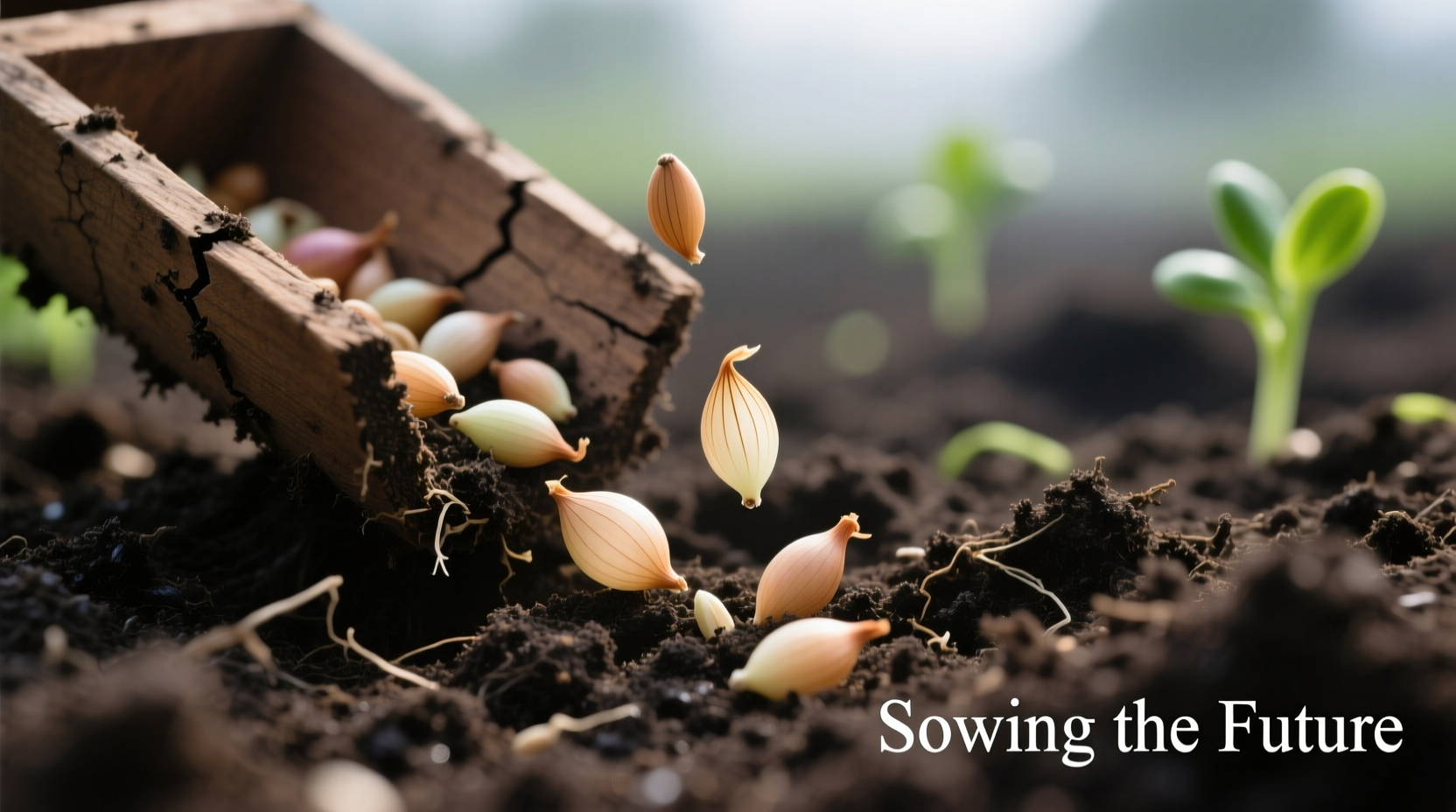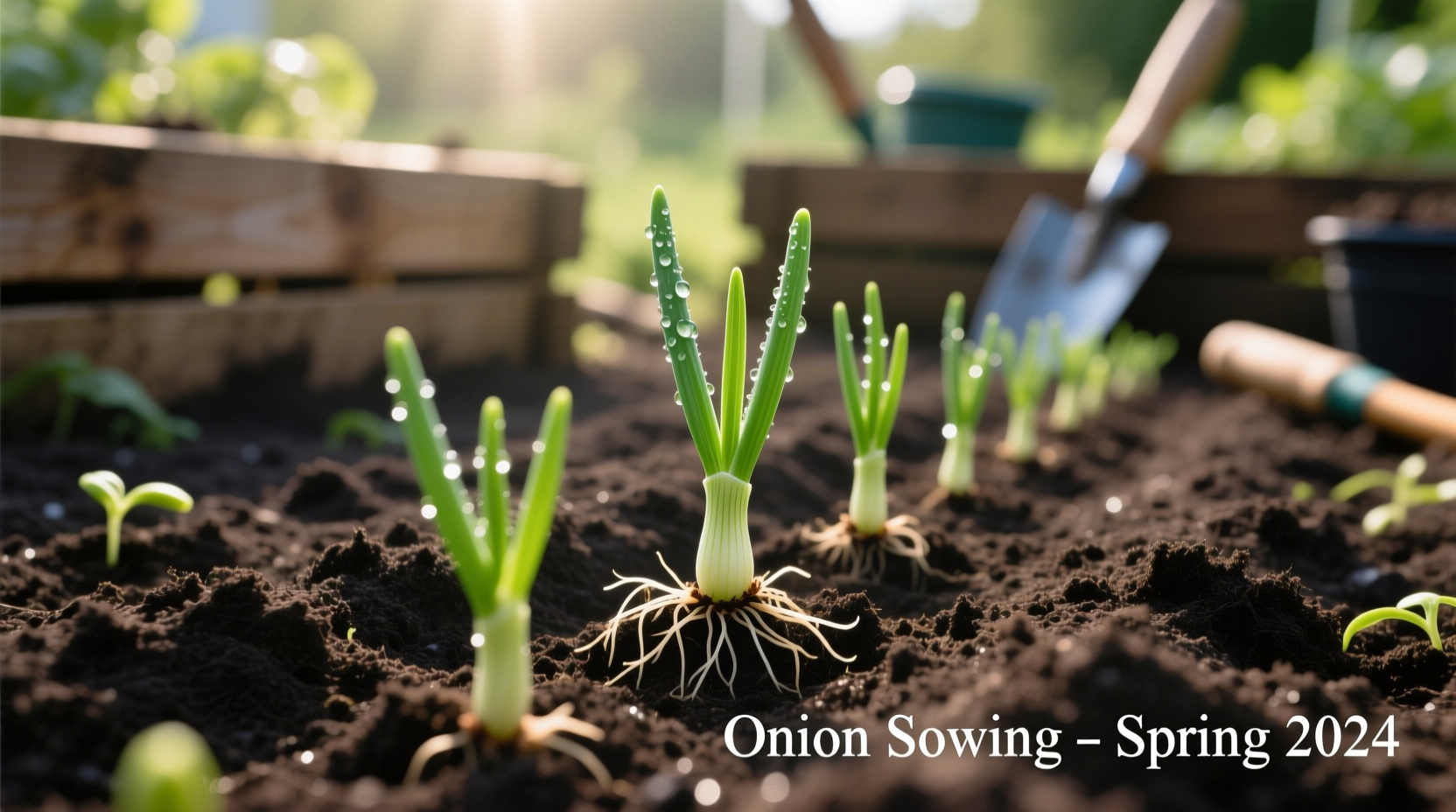Master Onion Sowing: Your Complete Planting Roadmap
Whether you're a first-time gardener or refining your technique, understanding onion sowing fundamentals transforms your harvest. Onions require precise timing and care during planting to develop those perfect, layered bulbs. This guide delivers actionable steps backed by agricultural research to ensure your onion crop thrives from seed to harvest.
Planning Your Onion Planting Strategy
Successful onion growing starts with matching varieties to your climate. Day-length requirements determine whether onions form bulbs in your region:
| Onion Type | Day Length Requirement | Best Zones | Planting Window |
|---|---|---|---|
| Short-Day (Sweet) | 10-12 hours | 7-11 | Oct-Dec (fall planting) |
| Intermediate-Day | 12-14 hours | 5-7 | Feb-Mar (early spring) |
| Long-Day (Storage) | 14-16 hours | 3-5 | Mar-Apr (as soil thaws) |
According to the USDA Plant Hardiness Zone Map, northern gardeners (zones 3-5) achieve best results with long-day varieties like 'Yellow Sweet Spanish', while southern growers (zones 7-11) should choose short-day types such as 'Texas Grano'. Intermediate varieties work well in transition zones (5-7) with 'Candy' being a reliable performer.

Soil Preparation Essentials
Onions demand well-prepared soil for optimal root development. Two weeks before planting:
- Test soil pH (ideal range 6.0-7.0) using a reliable kit
- Amend heavy clay soils with 3 inches of compost and coarse sand
- Work in 2-3 inches of aged manure or balanced organic fertilizer
- Create raised beds 4-6 inches high for improved drainage
The University of Minnesota Extension confirms onions perform poorly in compacted or waterlogged soils, which cause rot and stunted growth. Avoid planting where other alliums grew recently to prevent disease buildup.
Step-by-Step Sowing Instructions
Follow these precise steps whether planting seeds or sets:
For Onion Seeds (Indoors)
- Start seeds 8-10 weeks before last frost date
- Use seed trays with drainage holes and sterile mix
- Sow seeds 1/4 inch deep, 1 inch apart
- Maintain soil temperature at 65-75°F (18-24°C)
- Provide 14 hours of light daily once sprouted
- Transplant when seedlings reach pencil thickness
For Onion Sets (Direct Garden Planting)
- Plant when soil temperature reaches 50°F (10°C)
- Choose sets under 1 inch in diameter for best results
- Position with pointed end up, 1-2 inches deep
- Space 4-6 inches apart in rows 12-18 inches apart
- Water immediately after planting
Research from Oregon State University Extension shows planting depth directly impacts bulb formation—too shallow causes poor root development, while too deep delays emergence. The optimal 1-2 inch depth balances these factors.
Critical Post-Planting Care
What happens after sowing determines your harvest quality:
Water Management
Maintain consistent moisture (1 inch per week) without saturation. Use drip irrigation or soaker hoses to keep foliage dry and prevent disease. Reduce watering 2-3 weeks before harvest to encourage proper bulb curing.
Thinning Schedule
- When seedlings reach 4 inches: thin to 2 inches apart
- At 6 inches tall: final thinning to 4-6 inches apart
- Use thinnings as green onions in salads
Fertilization Timing
Apply balanced fertilizer (10-10-10) when plants reach 6 inches tall, then every 3-4 weeks until bulbs begin forming. Stop fertilizing 4 weeks before expected harvest to prevent excessive top growth.
Troubleshooting Common Sowing Problems
Address these frequent onion-growing challenges promptly:
Double Bulbing
Cause: Temperature fluctuations during early growth
Solution: Plant sets at proper depth; avoid early planting in cold soil
Poor Bulb Formation
Cause: Incorrect day-length variety for your zone
Solution: Match varieties to your region's daylight patterns
Onion Maggots
Prevention: Rotate crops annually; use floating row covers at planting
Control: Apply beneficial nematodes if infestation occurs
Harvesting and Storage Guidelines
Harvest onions when tops naturally fall over and yellow. Cure bulbs for 2-3 weeks in a warm, dry, well-ventilated area before storage. Store cured onions in mesh bags in a cool (32-40°F), dark location with 65-70% humidity. Properly stored onions maintain quality for 4-6 months.
Advanced Sowing Techniques
For gardeners seeking higher yields:
- Succession planting: Sow every 2-3 weeks for continuous harvest
- Interplanting: Grow with carrots (different root depths)
- Cold frames: Extend season in northern climates











 浙公网安备
33010002000092号
浙公网安备
33010002000092号 浙B2-20120091-4
浙B2-20120091-4